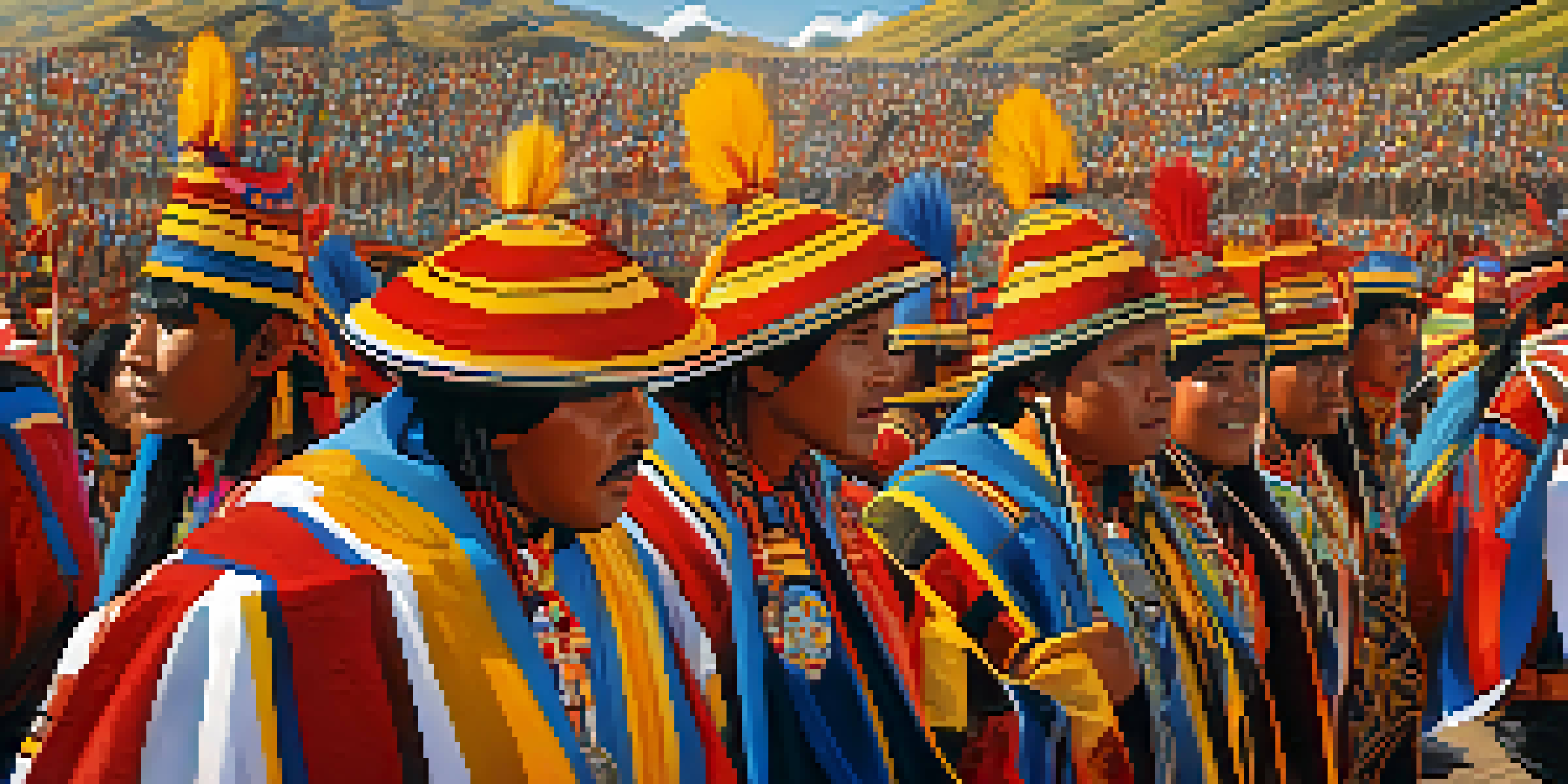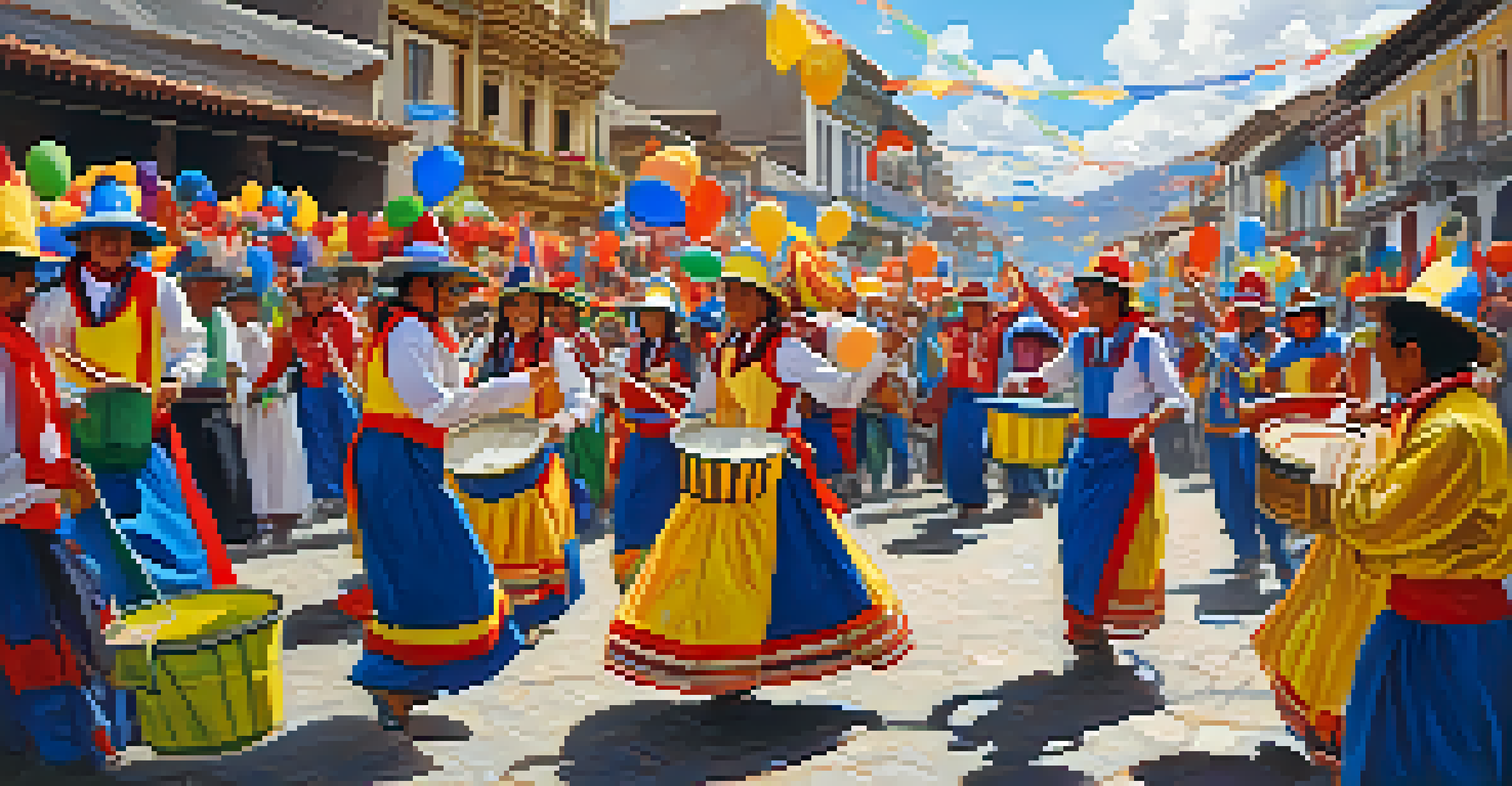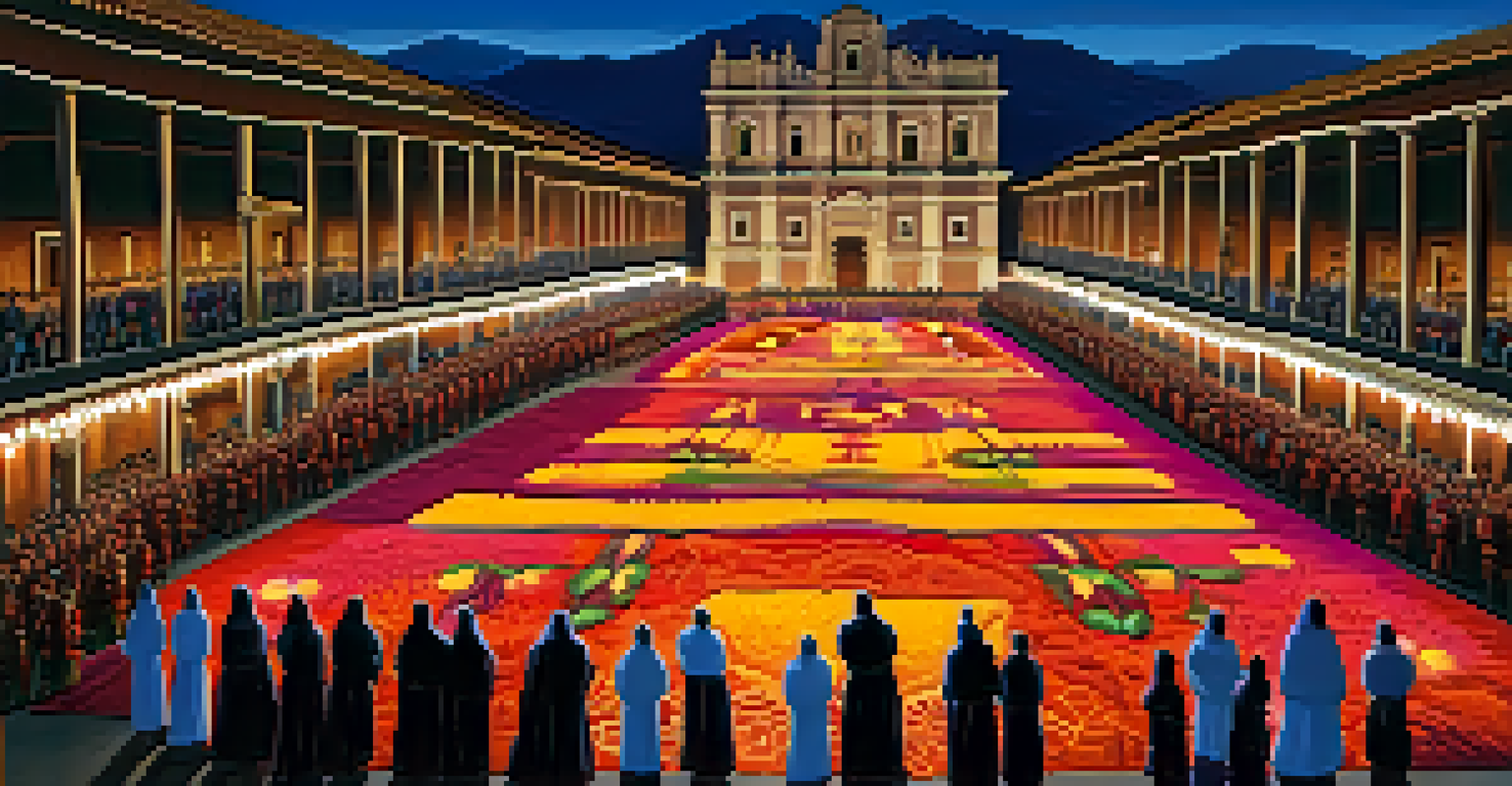Exploring Peru's Rich Cultural Heritage Through Festivals

An Introduction to Peru's Festival Culture
Peru is a country steeped in vibrant culture, and its festivals play a pivotal role in expressing this heritage. From ancient traditions rooted in indigenous beliefs to modern celebrations, these events showcase the diverse tapestry of Peruvian life. Festivals in Peru are not just about celebration; they are a reflection of the country's rich history and community spirit.
Festivals are a way to connect with our past, celebrate our present, and inspire our future.
One of the most striking aspects of Peruvian festivals is their connection to the local agricultural calendar. Many events coincide with planting and harvesting seasons, emphasizing the importance of nature in daily life. This connection to the earth is a reminder of the ancient civilizations that once thrived in this region, highlighting their agricultural practices.
As we explore the various festivals throughout the country, we’ll uncover the stories behind them, the vibrant colors, the sounds of music, and the delicious foods that characterize these celebrations. Each festival serves as a living museum, where both locals and visitors can immerse themselves in Peru's cultural heritage.
Inti Raymi: The Festival of the Sun
One of the most iconic festivals in Peru is Inti Raymi, also known as the Festival of the Sun. Celebrated in Cusco every June 24th, this festival dates back to the Inca Empire and honors Inti, the sun god. The event features a grand reenactment of ancient rituals, complete with traditional costumes and music that transport spectators back in time.

During Inti Raymi, thousands of people gather in the Sacsayhuamán archaeological site to witness the colorful processions and ceremonies. Participants dress in elaborate costumes that reflect the rich Incan heritage, allowing visitors to appreciate the artistry involved. The atmosphere is filled with joy and reverence, as people pray for good harvests and blessings from the sun.
Peru's Festivals Reflect Rich Heritage
Peru's festivals showcase a vibrant blend of ancient traditions and modern celebrations, reflecting the country's diverse cultural heritage.
This festival not only celebrates the sun but also serves as a reminder of the resilience of Peruvian culture. By keeping these traditions alive, the people of Cusco provide a sense of identity and continuity that connects generations, making Inti Raymi a beautiful representation of their enduring spirit.
Carnaval: A Festive Extravaganza
Carnaval in Peru is a lively celebration that takes place before Lent, and it’s marked by vibrant parades and playful water fights. Each region has its unique spin on the festival, but the common thread is the spirit of joy and community. The streets come alive with colorful costumes, music, and dancing, drawing locals and tourists alike into the festivities.
Culture is the widening of the mind and of the spirit.
In places like Cajamarca, Carnaval features traditional music played on instruments such as the harp and the cajón. Residents engage in friendly water battles, using buckets and balloons to soak each other, which symbolizes cleansing and renewal. This playful aspect of Carnaval fosters a sense of belonging and camaraderie among participants.
The celebration is also an excellent opportunity to indulge in traditional Peruvian foods. From hearty stews to sweet treats like 'picarones' (sweet potato doughnuts), Carnaval offers a culinary adventure that showcases the country's rich gastronomic heritage. Through these experiences, visitors gain insight into the culture and values of the communities they visit.
Fiesta de la Virgen de Candelaria: A Religious Celebration
The Fiesta de la Virgen de Candelaria, held in Puno, is one of the most significant religious festivals in Peru. Celebrated in February, this festival honors the Virgin of Candelaria, the patron saint of the city. It showcases a blend of Catholic and indigenous traditions, highlighting the spiritual devotion of the local people.
During the festival, thousands of dancers and musicians parade through the streets, dressed in stunning traditional attire. The performances incorporate elements of both Andean folklore and contemporary dance, creating a captivating spectacle. This vibrant display not only entertains but also reinforces cultural identity and pride among the participants.
Inti Raymi Celebrates the Sun God
Inti Raymi, celebrated in Cusco, honors the sun god Inti with grand reenactments that highlight the resilience of Peruvian culture.
The festival culminates in a grand mass and a procession where the statue of the Virgin is carried through the streets, accompanied by prayers and offerings. The deep faith and traditional practices displayed during this event offer a glimpse into the values that bind the community together, making it a profound experience for all who attend.
Semana Santa: A Time for Reflection and Reverence
Semana Santa, or Holy Week, is observed throughout Peru, but the celebrations in Ayacucho are particularly renowned. This solemn festival commemorates the events leading up to Easter and is marked by processions, elaborate altars, and traditional music. It’s a time for both celebration and reflection, drawing many visitors to experience its unique atmosphere.
In Ayacucho, the streets are filled with beautifully crafted carpets made from colored sawdust, which serve as a backdrop for the processions. These intricate carpets are a labor of love, created by local families who come together to express their faith and artistry. As the processions pass over these carpets, the scene becomes a stunning blend of color and devotion.
Semana Santa is not just a religious observance; it’s an opportunity for communities to unite in shared beliefs and practices. The festival fosters a sense of belonging and continuity, allowing participants to reflect on their faith while also celebrating their cultural heritage. This blend of spirituality and tradition makes Semana Santa a deeply moving experience.
Festival de la Vendimia: A Toast to Wine and Culture
The Festival de la Vendimia, or Grape Harvest Festival, is celebrated in the wine-producing region of Ica each March. This festival is a joyous occasion that honors the grape harvest, showcasing the region's rich viticulture and culinary traditions. It’s a time for locals to come together and celebrate their agricultural bounty, and it attracts wine enthusiasts from around the world.
During the festival, visitors can enjoy wine tastings, culinary demonstrations, and traditional music and dance performances. One of the highlights is the grape stomping contest, where participants compete to crush grapes in traditional style. This fun and interactive aspect of the festival emphasizes the communal spirit and joy of celebrating local customs.
Carnaval Brings Joy and Community
Carnaval in Peru fosters a sense of belonging through lively parades and playful water fights, celebrating joy and community spirit.
The Festival de la Vendimia not only highlights the importance of wine in Peruvian culture but also fosters a deep appreciation for the land and the people who cultivate it. By participating in this festival, visitors gain a deeper understanding of Peru's agricultural heritage and the pride that comes from local craftsmanship.
Conclusion: Celebrating Peru’s Vibrant Heritage
Peru's festivals are a rich tapestry of history, culture, and community spirit. Each celebration offers a unique perspective on the country’s diverse heritage, inviting participants to engage with traditions that have been passed down through generations. Whether it’s a grand procession or a simple gathering, these events create lasting memories and connections.
Through festivals, Peruvians share their stories, beliefs, and values, allowing visitors to experience the heart and soul of the country. These events serve as a reminder of the importance of community, identity, and the preservation of cultural heritage in an ever-changing world.

As we explore the vibrant festivals of Peru, we not only celebrate the past but also embrace the future. By participating in these celebrations, we contribute to a shared appreciation for cultural diversity and the beauty of human connection, making each festival a meaningful experience for everyone involved.